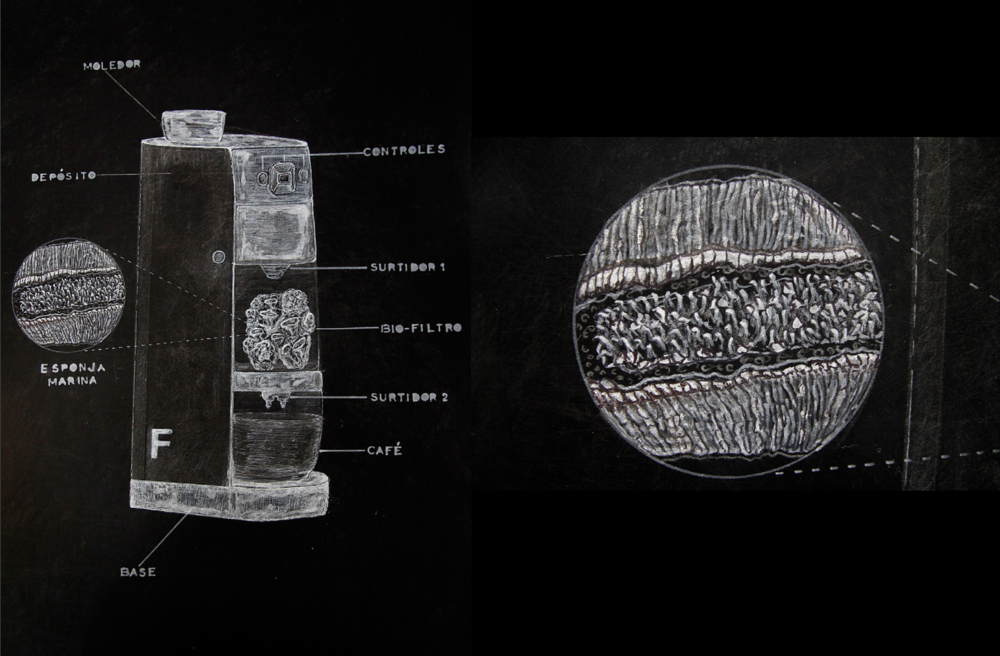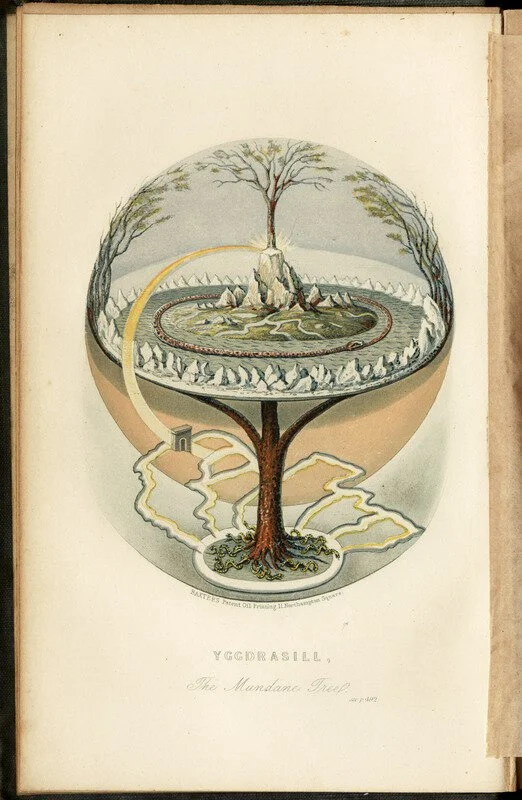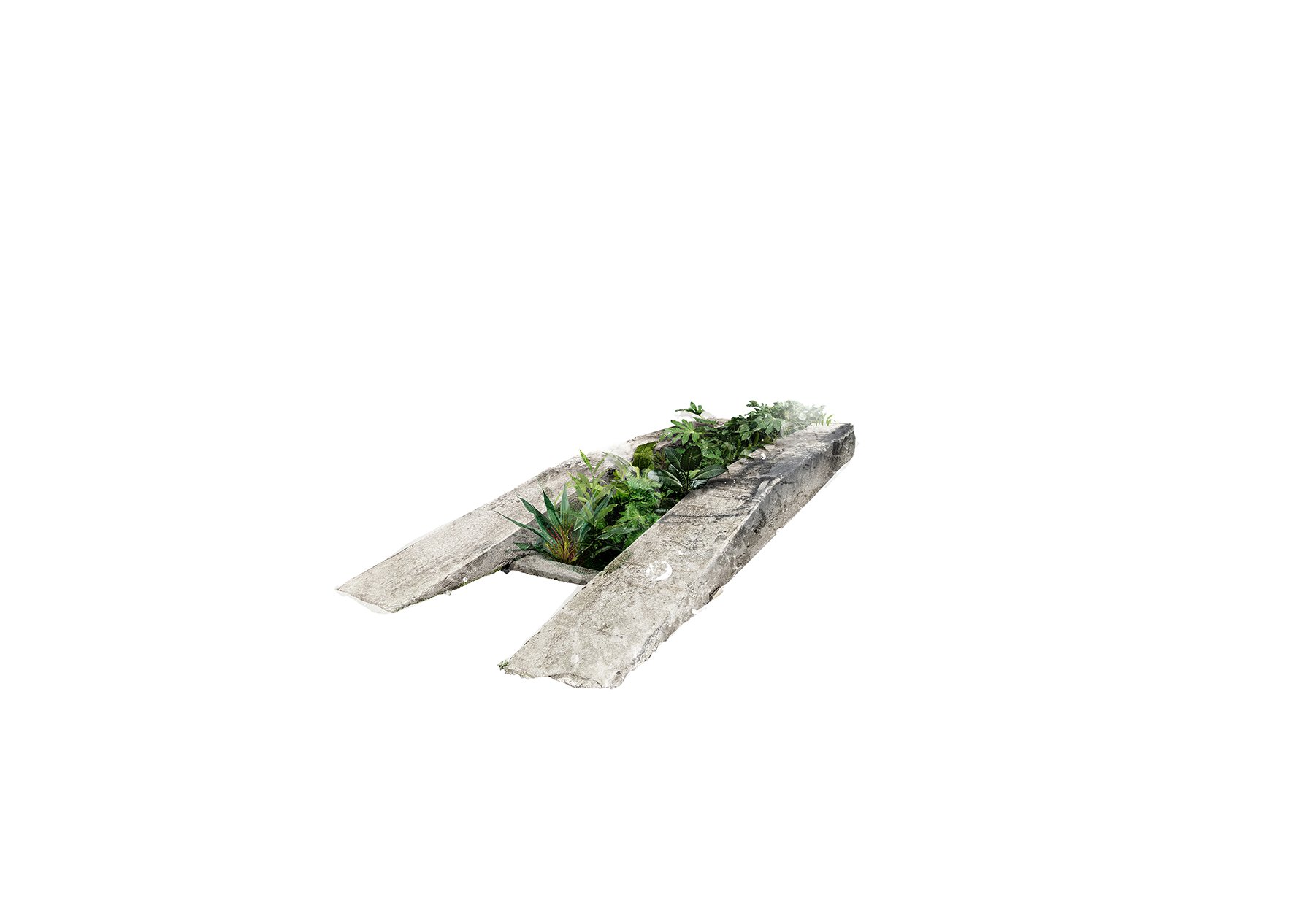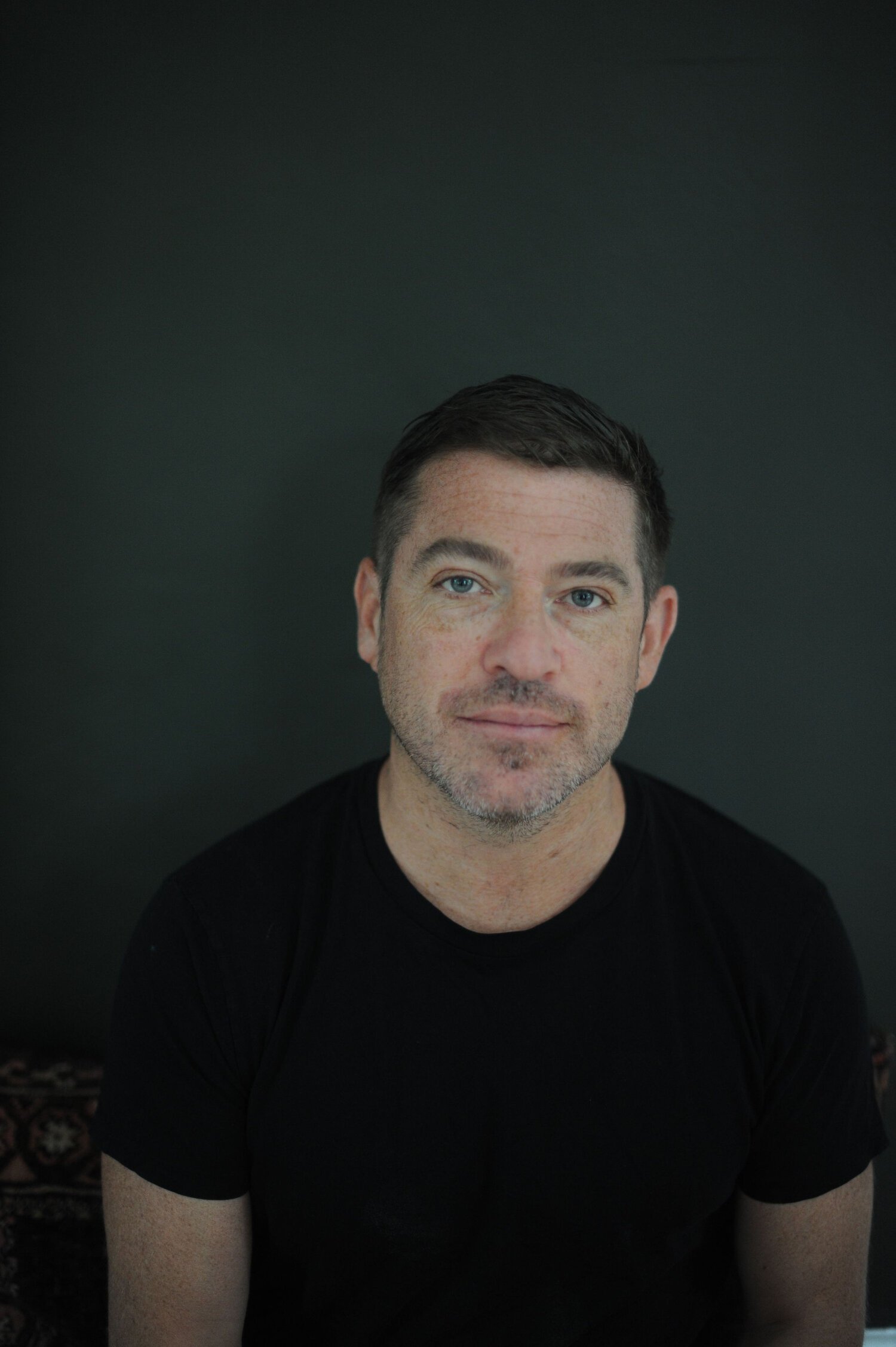Ana Dana is a Croatian architect, curator, editor focused on creating environments that catalyze social change. Co-founder of ARCHIsquad – Division for Architecture with Conscience and educational programs UrgentArchitecture. Interest in architectural theory and experimental design led her to co-found Think Space and Future Architecture platforms. She was one of the curators of Actopolis – a transnational artistic laboratory with urban interventions in Athens, Belgrade, Bucharest, Mardin, Oberhausen, Sarajevo and Zagreb.
Mika Savela is a curator, architect, editor and designer based in Helsinki. His creative practice bridges visual culture, critical architectural and urban concepts – the off-context, margins, representation, and approaches between the historical, the modern – and the digital. Savela is the co-founder at Selim Projects, a Helsinki-based contemporary platform for editorial/curatorial/cultural/visual/spatial projects, together with architect Henrik Drufva. His research has explored the co-development of curatorial practice, exhibition histories, biennialization, urban research tendencies and the contemporary and historical narratives of Chinese urbanisation.
Critical Tourism: New Curatorial Frameworks for Institutional Hospitality
Check out our conversation with Ana Dana Beroš and Mika Savela about how institutional critique today must interrogate institutions’ complicity with the service and visitor economy. Together, we will delve into the complex relationships between tourism, architecture, migration/mobility, and art highlighting how these are central in delineating a path towards care and accountability.
We have learned about Critical Tourism as a curatorial led research, guided by artistic practices and interests, and developed as a critical cultural response in locations where tourism has developed into a regional mono economy. Research conducted by Sonja Lebos has contributed extensively into the critique of unplanned and chaotic spatial tourisification, together with its social aeshtetical connotations.
Image Credit, VAC: Marco Cappelletti
Non-Extractive Architecture: On Designing Without Depletion
Sofia Pia Belenky from Space Caviar in conversation with Ameli M. Klein
Further unpacking non-extractivist practices, we are excited to be in conversation with Space Caviar on their current project “Non-Extractive Architecture: On Designing Without Depletion” at V-A-C Zattere, Venice.
The project set out to examine — and redefine — the public’s expectations of the architect and architects’ expectations of themselves. What if architecture were understood first and foremost as a form of husbandry of the built and natural environments?
What if we redesigned our economies to favour integration, circularity durability and social resilience through the towns and cities we build?
What if the material supply chains behind environments we inhabit were visible and participatory rather than invisible and often exploitative?
The Planthropocene: The Age of Plants and Plant Creativity
Paul Rosero Contreras in Conversation with Sara Garzon
What is the Plantropocene and how can we become more attuned to notions of plant creativity, perception, and worldmaking capacities? This is one of a two part series on plant intelligence intended to help us inquire into how to curate for a broken world by providing spaces for interspecies flourishing?
The conversation follows Paul’s text “The Revolution Will Launch in the Garden; Politics of representation and vegetal intellig(senti)ence” published at Colección Patricia Phelps de Cisneros’ online platform last year.
Paul Rosero Contreras (Quito, 1982) is a multimedia artist working with speculative realism, scientific information and fictional narratives. His body of work intertwines distinct epistemologies, ranging from indigenous thinking to the history of science. It explores topics related to geopolitics, interspecies reciprocity, environmental issues and experimentation on future sustainable settings. Rosero holds an MFA from the California Institute of the Arts – CalArts and a Master in Cognitive Systems and Interactive Media from Universidad Pompeu Fabra, Spain. His work has received different prizes and grants, and it has been displayed widely at venues and events such as the 57th Venice Biennale, Musee Quai Branly in Paris, Instituto Cervantes in Rome, Museo de Historia de Zaragoza, 5th Moscow Biennale for Young Art, the 1st. Antarctic Biennale, H2 Center, Augsburg, 11th. Cuenca Biennale, 1st. Bienal Sur in Buenos Aires, at Siggraph in Los Angeles, among other spaces. Currently, Rosero teaches and conducts research at San Francisco de Quito University.
Plant-Thinking, Artist Mystics and Gardening the Divine
Aliya Say in Conversation with Sara Garzon
How do we move away from simply representing the vegetal world and into a practice that actively engages with plant’s agency, creativity, intentionality, and modes of thinking?
Aliya Say is an art writer, researcher, editor, and strategy consultant living in London, UK, and sometimes Aarhus, Denmark. Her PhD research is concerned with vegetal and mystical forms of thinking, stemming from her fascination by the notion of plant intelligence, her interest in ecstatic experiences, and her profound admiration for spiritual work and ecological thinking, as well as the overlaps between the two.
Barena Primavera-Estate
Pietro Consoland from Barena Bianca in Conversation with Ameli M. Klein
The collective adopted the Barena (typical venetian salt marsh, essential to the survival of the city) as its emblem. Barena Bianca is characterized by an anti-mimetic poetic approach, a willingly dysfunctional camouflage, refusing to disappear. It seeks to emerge in every situation, to be clearly visible, increasingly impossible to ignore. Its work mostly happens in public spaces and formalizes in hybrid collaborative actions, installations and happenings communicated mainly through video.
One of the collectives recent projects “Barena Primavera-Estate” was a workshop developed in collaboration with Giorgia Cereda and produced and coordinated by We Are Here Venice
During the World’s Ocean Day, 20 Venetian kids recycled old shirts, about to be abandoned, in order to become living symbols of the Lagoon. Each kid composed his own image on the clay tablet before stamping it on the shirt, using plants and flowers from the Barene, giving life to a personal interpretation of the Lagoon’s ecosystem. The “mock-mercial” strives to encourage to adopt a set of ideals necessary in order to tackle the downwards spiral of the Venetian ecosystem, in which both the resident population and the amount of Barene declined of about 70% during the last century. Each of us can be a Barena.
Sebastian shared some of the images from his recent exhibition "The Penumbral Age" that speak directly to the question of rewilding as a curatorial practice.
One of APG's (The Artist Placement Group) contracts was the employment of John Latham in 1975–76 at the Scottish Office’s Development Agency in Edinburgh. The artist's task was to consult and develop a “feasibility study” regarding the adaptation or removal of nineteen bings in the Midlothian region of Scotland, the remains of mining processes that began in 1860s designed to extract and distil products from oil-bearing shale for use as paraffin fuel. Latham treated the bings as "process sculptures" and proposed "nominating" them as monuments of historical, cultural and natural significance. The proposal was partially implemented—a group of bings called the Five Sisters became protected by the Ancient Monuments and Archaeological Areas Act
On Making Curation a Rewilding Practice
Sebastian Cichocki in conversation with Sara Garzon
A conversation on the meaning and potentialities of "rewilding" discussing Collective Rewilding's larger question: how can we make curation a rewilding practice?
Sebastian Cichocki lives and works in Warsaw, where he is the chief curator at the Museum of Modern Art. Selected curated exhibitions include the most recent "The Penumbral Age. Art in the Time of Planetary Change" (2020) at Warsaw Museum of Modern Art; the Polish pavilions at the 52nd and 54th Venice Biennales, with Monika Sosnowska (1:1) and Yael Bartana (... and Europe will Be Stunned) respectively, the latter project co-curated with Galit Eilat, Making Use. Life in Postartistic Times, Museum of Modern Art in Warsaw (2016), Rainbow in the Dark: On the Joy and Torment of Faith, Konstmuseum Malmö (2015), SALT Galata, Istanbul (2014), Zofia Rydet, Record 1978-1990, Museum of Modern Art in Warsaw (2015), Procedures for the Head, Kunsthalle Bratislava, Slovakia (2015), New National Art. National Realism in the XXIth Poland Museum of Modern Art in Warsaw (2012), Early Years, KW Institute for Contemporary Art, Berlin (2010), Raqs Media Collective, The Capital of Accumulation, Museum of Modern Art in Warsaw (2010), Oskar Hansen. Process and Art 1966-2005, Museum of Modern Art in Skopje, Macedonia. Cichocki is a curator of The Bródno Sculpture Park, a long-term public art programme initiated in 2009 with the artist Paweł Althamer. He has curated exhibitions in the form of a novella, radio drama, opera libretto, garden, anti-production residency programme, and performance lectures.
Planet of the People
Julijonas Urbonas of the Lithuanian Space Agency in conversation with Ameli M. Klein at the Lithuanian Pavilion of La Biennale di Venezia 2021
The Lithuanian Space Agency (LSA) is an organisation that researches space architecture and gravitational aesthetics. The agency takes the radical and unique experiences of space to redefine who we are and what we can know and imagine.
The agency functions as an independent body, establishing temporary space-laboratories for their projects around the world on an ad hoc basis. The LSA founder is Julijonas Urbonas - artist, designer, researcher and engineer - who is behind all of the LSA projects, including the ambitious programme Planet of People, which is creating an artificial planet made of human bodies.
→ The LSA presents Julijonas Urbonas’ Planet of People, an artistic study into a hypothetical artificial planet made up of human bodies.
→ Instead of sending humans to colonise other planets, what if we catapult them into space to form a new planet - a planet of people?
→ The LSA presents a prototype to test this out and explores what it would actually take to realise such a planet. In this way, the project raises questions about our current and future life on Earth and beyond.
Julijonas is an artist, designer, researcher, engineer, lecturer. He is the former Pro-Rector of arts at Vilnius Academy of Arts and the CEO of an amusement park in Klaipeda.
For more than a decade, he has been working between critical design, amusement park engineering, performative architecture, choreography, kinetic art and sci- fi and has been developing various critical tools for negotiating gravity: from a killer roller coaster to an artificial planet made entirely of human bodies. As part of his research, he has coined the term ‘gravitational aesthetics’, which involves manipulating gravity to create experiences that push the body and imagination to the extreme.
Adrián Balseca, Jardín I (draft of the series PLANTASIA OIL Co.), 2021. Courtesy of the artist
Guided Tour of PLANTIASIA OIL Co. at Bienal Sao Paulo
Adrián Balseca in Conversation with Sara Garzon. A collaboration between the artist and Amazon Visual Archive
GARDENS IN THE AGE OF PETROCAPITALISM
Garden and landscape design have had an essential aesthetic role in the history of art and architecture. The role of personal gardens has, however, taken new significance in these last two years as we face an escalating environmental crisis and are confined to an ongoing lockdown. Divested from modernist aesthetics and countering the illusion of progress, future, and newness, gardens provide the possibility of another, different place. Ecuadorian artist’s Adrian Balseca’s new project PLANTASIA OIL Co. thus provides a heterotopia for living amid a broken world. This heterotopia does not lie in gardens being idealized sites but alternative spaces that stand in for the potentiality of nature. That is not a defined idea of the natural but as a space for mirroring an embodied return to nature. Adrián Balseca (Quito, 1989) has investigated the history of extractivism in Ecuador. His practice points to the paradoxes that developmentalist ideologies brought about whereby in addition to aspiring to economic and social progress, the modernization and industrialization in specific encouraged the destruction of natural ecosystems and the expropriation of indigenous territories.
Down The Sea, case studies, AA nanotourism Visiting School, Ault, France, 2017
AAVS explores the possibility of “smaller-scale, non-intrusive ways of promoting tourism. Starting with thorough experimental researched of existing communities focusing on conducting creative, site-specific prototypes of strategies for 𝘕𝘢𝘯𝘰𝘵𝘰𝘶𝘳𝘪𝘴𝘮 in specific contexts around the world which include events, installations, rituals and exchange platforms that are either temporary or permanent.” Since 2014 AAVS has been developing case studies through creative and critical interventions in various locations around the world, creating conditions for mutual learning on sites like Sekrin, Vienna, Cusco, Honolulu, Ault and other.
How can Nanotourism challenge individualism and promote collective awareness?
Tina Gregoric and Aljosa Dekleva of Nanotourism in Conversation with Sabina Oroshi
We explored the question of how can implementing critical thinking into design and architecture help us better engage as tourists? Further introducing the concept and practice of nanotourism by examining the impact that KSEVT - Cultural Centre of European Space Technologies has had in the small village of Vitanje in central Slovenia.
An old community centre building was removed to provide space for the new KSEVT building, which was designed with the aim of facilitating the research of Space Technologies, and to honour the work of Herman Potočnik Noordung - a Slovene rocket engineer and pioneer of astronautics.
AAVS has visited the site in 2014, 2015 and 2016 to mediate and find ways for creating bonds and relationships between KSVET and the community of Vitanje. Encouraging, on one hand the participants and residence researchers at KSVET to experience and extensively learn about ways of existence in the social and physical context of Vitanje, and on the other hand engaging with the community of Vitanje to take advantage of the new situation without losing touch with their local heritage.
Sun&Sea, Artists photo by Andrej Vasilenko
A testament to the performativity of spectatorship in mass tourism and art tourism, in particular, is the opera-performance Sun and Sea, a collaboration between Rugilė Barzdžiukaitė, Vaiva Grainytė, and Lina Lapelytė. Premiering in 2017 and curated by Lucia Pietroiusti for the Lithuanian Pavilion at the 58th Venice Biennale, where it was awarded the Golden Lion.
𝘕𝘦𝘸 𝘈𝘱𝘱𝘳𝘰𝘢𝘤𝘩𝘦𝘴 𝘵𝘰 𝘐𝘯𝘴𝘵𝘪𝘵𝘶𝘵𝘪𝘰𝘯𝘢𝘭 𝘚𝘶𝘴𝘵𝘢𝘪𝘯𝘢𝘣𝘪𝘭𝘪𝘵𝘺: 𝘌-𝘞𝘌𝘙𝘒 𝘓𝘶𝘤𝘬𝘦𝘯𝘸𝘢𝘭𝘥𝘦
Helen Turner in Conversation with Ameli M. Klein
We were in conversation with Helen Turner the Co-Artistic Director and Curator of EWerk Lukenwalde to further our exploration of alternative institutional structures, community engagement, sustainability (in- and outside the cultural sector), and the upcoming edition of Sun & Sea.
Helen Turner and Pablo Wendel are the joint Artistic Directors of E-WERK Luckenwalde. Wendel has exhibited internationally, notably at the ICA, London (UK); KunstMuseum, Stuttgart (Germany) and Rockbund Art Museum (China). Turner was previously the Chief Curator at Cass Sculpture Foundation and has worked for Artangel, Kinman Ltd and her own curatorial platform AGENCY AGENCY. Turner holds an MA in Psychosocial studies from Birkbeck University of London under Slavoj Žižek and a BA in Fine Art from Chelsea College of Art, London.
How can Nanotourism challenge individualism and promote collective awareness?
Sabina Oroshi in conversation with Tina Gregoric and Aljosa Dekleva, founders of AA Nanotourism.
In the conversation we explored the question of how implementing critical thinking into design and architecture help us better engage as tourists? Tina and Aljoša are thinking with the term as “an alternative that describes and criticises the environmental, social and economic downsides of conventional tourism while taking into consideration the protection and enhancement of the local heritage, development of responsible economies and social inclusion.”
They suggest a reexamination of the very meaning of the term 𝘵𝘰𝘶𝘳𝘪𝘴𝘵: “tourist is an increasingly used term that more often implies a shallow interest in the cultures or environments.”
To better the systems that promote encroaching structures of mass tourism, the concept, and more importantly, the practice of nanotourism becomes a social tool that stimulates mutual interactions and “aims to confront the current realities and presumptions on tourism. [...] Instead Nanotourism suggests to think in becoming a 𝘕𝘢𝘯𝘰𝘵𝘰𝘶𝘳𝘪𝘴𝘵 who drifts away from superficial one-way observation towards a participatory two-way relationships of exchange or co-creation.”
“Microclima was born from the impulse to give the Serra a new function that underlines its historical importance, its symbolic value, and its potential in the social fabric. It is therefore a project aimed at integrating artistic programming with the host physical space through the elaboration and experimentation of new communication codes for the fruition of cultural heritage.
Inside and beyond the structure of the Serra, Microclima opens up to independent and anarchist experiments, favoring approaches in which self-training, underrated realities, and ambiguous epistemologies are welcome. Microclima collaborates with amateurs and professionals of every field, considering them above all in their role as researchers and critical thinkers, investigating the relationship between art, nature and socio-cultural relationships.”
Todo li Citrus Fundacio. Biodiversity
Paolo Rosso of Microclima in Conversation with Ameli M. Klein
Connecting over food: Paolo Rosso from invited us over for some Venetian squid-pasta: cooking while talking about the start of Microclima, the motivation behind the collaboration with Todo li Citrus Fundacio, and the Citrus project’s challenges and highs.
Founded in Venice in 2011, Microclima is a research-driven program that focuses on the natural world, cultural heritage, and the public sphere: organized by Paolo Rosso and Alice Sartori.
Housed in the Serra dei Giardini, a greenhouse built in 1894 for La Biennale to preserve the exotic plants that decorated the first International Exhibitions of Art, the location has played a crucially role in the formats development.
It is the intersection of local engagement, ecological theory, and cultural research that allows the project to question modes of cultural production and the limitations of an exhibition framework within a hyper-local context. By taking the site’s original greenhouse function into consideration, we are introducing the Microclima project as a starting point to asks: what social, historical, and cultural value have we assigned to plants in the past century? How have we shifted our position in relation to plants through farming, gardening, foresting, and nursery? Has our focus on efficiency, productivity, and revenue irreversibly changed the human position within and among nature?
Biodiversity through re-invented traditional farming, a model for the future?
An Embassy for the Oceans
Markus Reymann from Ocean Space in conversation with Ameli M. Klein
Continuing our conversation on external cultural institutions based within Venice, we would like to introduce Ocean Space. Though not a local initiative the organisation closely works with community based practitioners such as Barena Bianca, through their fellowship and outreach programs. Located in the Church of San Lorenzo, Ocean Space is a part of TBA21.
As a planetary center for exhibitions, its research and public programs catalyze ocean literacy and advocacy through the arts.
Led by TBA21 Academy director Markus Reymann the space is building on the expansive work of the academies past ten years, positioning itself as the embassy for the oceans to fosters wonder, engagement, and collective action.
Ocean Space opened the church to the public in 2019 with the exhibition “Moving Off the Land II” by Joan Jonas, having been largely closed to the public for over 100 years and after extensive renovations, which were finished in early 2020. Ocean Space operates an annual program and is open to the public from spring to autumn
Image Rights: Artist Taloi Havini at Ocean Space.
Photo: Zan Wimberley
Patrice Riemens is a geographer and currently the Fellow of the Waag Society in Amsterdam. He is a promoter of Open Knowledge and Free Software and has been involved as a "FLOSSopher" (a 'philosopher' of the Free/Libre and Open Source Software movements) at the Asia Source and Africa Source camps, held in 2005 and 2006 to promote FLOSS among non-governmental organizations. He is a member of the staff of Multitudes.
On Hospitality
Patrice Riemens in Conversation with Ameli M. Klein
By thinking through the exemplary case of Venice, we are addressing the broader housing crisis, and how it is amplified by tourism as a factor of gentrification. Patrice Riemens allows us to deepen the conversation by drawing a close comparison between the cities of Venice and Amsterdam, particularly in regard to social housing and its impact on migration. Riemens is closely invested in the availability of social housing in Amsterdam through his advisory role, allowing us to not only consider the impact of extreme gentrification on local communities, but on new inhabitants as well. Who do we welcome, and what does it say about our understanding of community?
Exploring methods of curating for a broken world
Tereza Teklić and Ena Hodžic from KONTEJNER in conversation with Sabina Oroshi
KONTEJNER bureau of contemporary art praxis is a non-profit NGO from Zagreb (Croatia) engaged in curatorial work, organization of public events and art festivals. The organization is also interested in education and social theory research. The main interest is progressive contemporary art which investigates the role and meaning of science, technology and the body in our society. Kontejner is working specifically in the framework of cross-sectoral collaborations, and has organized numerous group and solo exhibitions, performances, lectures, workshops and presentations.
Tereza holds the position of curator and project manager. She graduated in Art History and German language and literature at the University of Zagreb. Since 2008 she has worked as project assistant, coordinator, project manager and curator at KONTEJNER. Since 2011 she is a part of the curatorial team at Mochvara Gallery, where the artistic programme is organized in collaboration with Culture Development Association "CDA" and Mochvara Club. She is also one of the initiators of the interdisciplinary project Light in Places organized by IN PLACES.
The Touch Me 2020 publication features curatorial texts and a catalog of two international exhibitions, as well as the festival’s film and performance program which took place from 17.09. to 03.10.2020. in Zagreb.
Ena is the programme coordinator. She holds an MA in Art History (2012.) and Museum studies and heritage management (2014.), University of Zagreb. Works as curator and project organizer since 2010 (Device_art, Extravagant bodies, Touch Me Festival). She is the programme coordinator for Kontejner since 2013, one of the curators of Mochvara Gallery (since 2011), and Sound Art Incubator platform (since 2012) - projects in which Kontejner works with Culture Development Association "CDA" and Mochvara Club as partners. She is also the consultant for project development, project planning, fundraising and strategic planning for other organizations of the independent cultural scene in Croatia.
Image courtesy of Nato Thompson
Thompson began his career as a curator at MASS MoCA, where he completed numerous large-scale exhibitions such as The Interventionists: Art in the Social Sphere, a survey of political art of the 1990s. His writings have appeared in numerous publications including Art Journal, Parkett, Cabinet, and The Journal of Aesthetics and Protest. He is the author of several books and catalogues, including Seeing Power: Art and Activism in the 21st Century (2015) and Culture as Weapon: The Art of Influence in Everyday Life.
Rethinking the nonprofit sector: the impact of international cultural infrastructures on local communities
Nato Thompson in Conversation with Ameli M. Klein
Nato Thompson is the Artistic Director of Philadelphia Contemporary, an “independent and free-standing, a venue that celebrates the abundance of genre-bending, multidisciplinary practices that make up the field of contemporary art” founded in 2016. He was previously the Chief Curator and then Artistic Director at Creative Time in New York, where his exhibitions and projects included Paul Chan’s production of “Waiting for Godot” in post-Katrina New Orleans, which included free public performances of Samuel Beckett’s play, theatre workships, educational seminars, and more. Other major projects at Creative Time included Kara Walker’s A Subtlety, and the itinerant Creative Time Summits.














